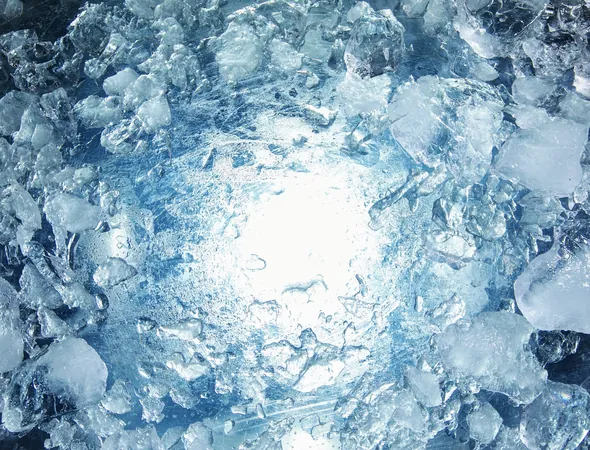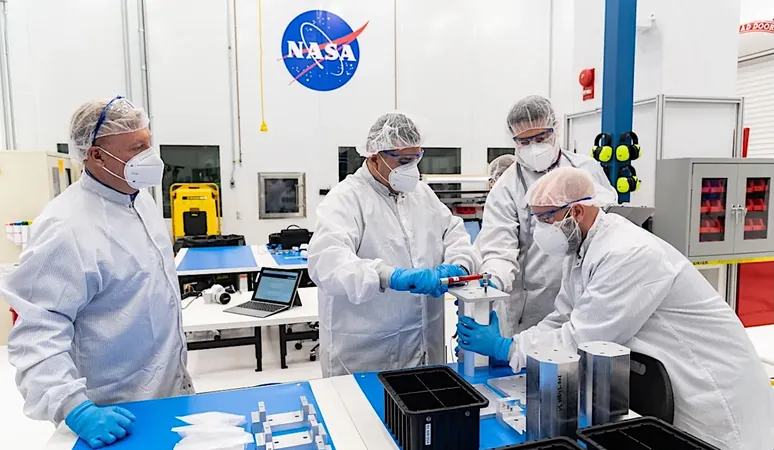
Ice: The Surprising Source of Electricity When Bent or Twisted!
2025-09-03
Author: Rajesh
Unlocking Electric Potential in Ice
When you think of electricity, ice isn’t usually at the top of the list. But a groundbreaking study has revealed that common frozen water can generate electric charge simply by bending or twisting. Researchers have found that the electrical response of ice rivals that of standard electroceramics like titanium dioxide and strontium titanate.
The Fascinating World of Flexo-Electricity
This remarkable phenomenon, dubbed "flexo-electricity," involves the relationship between electric polarization and strain—a coupling found in insulators. Unlike piezoelectric materials, which rely on specific crystal structures to produce electrical charge under pressure, flexo-electric effects can occur in any solid that is bent unevenly.
Groundbreaking Experiments in Ice
Dr. Xin Wen from the Catalan Institute of Nanoscience and Nanotechnology led a team that conducted innovative experiments involving ice slabs. By bending these frozen surfaces while monitoring electric voltage, they confirmed that ice emits electric charge across a wide temperature range, even as it approaches melting!
From Storm Clouds to Electric Fields
The implications of this research extend to meteorology. Ice particles within thunderclouds already play a crucial role in lightning formation. Researchers have now linked the flexo-electric effect to storm dynamics, suggesting that this new understanding could help explain the electrical activities seen in clouds.
Advancing Technology with Ice Power
Imagine harnessing ice for advanced technologies: it’s inexpensive, readily available in colder regions, and can be easily molded. Flexo-electric transduction could lead to simple sensors or converters that generate voltage from mechanical pressure—all without the need for high-temperature processing or rare materials!
Memory-Like Properties in Extreme Conditions
At extremely low temperatures, ice displays unique properties, such as a ferroelectric surface layer that can switch its electrical orientation with applied fields. This trait opens the door to potential memory-like responses in polar environments, making ice not just a source of hydration but a versatile tool for innovation.
Conclusion: Ice as an Electrical Wonder
The discovery of flexo-electricity in ice means it now joins the ranks of everyday materials capable of converting mechanical changes into measurable electric voltage. This challenges the long-held view of ice as a simple, inert substance, fostering a deeper connection between laboratory research and natural electrical phenomena in the atmosphere.



 Brasil (PT)
Brasil (PT)
 Canada (EN)
Canada (EN)
 Chile (ES)
Chile (ES)
 Česko (CS)
Česko (CS)
 대한민국 (KO)
대한민국 (KO)
 España (ES)
España (ES)
 France (FR)
France (FR)
 Hong Kong (EN)
Hong Kong (EN)
 Italia (IT)
Italia (IT)
 日本 (JA)
日本 (JA)
 Magyarország (HU)
Magyarország (HU)
 Norge (NO)
Norge (NO)
 Polska (PL)
Polska (PL)
 Schweiz (DE)
Schweiz (DE)
 Singapore (EN)
Singapore (EN)
 Sverige (SV)
Sverige (SV)
 Suomi (FI)
Suomi (FI)
 Türkiye (TR)
Türkiye (TR)
 الإمارات العربية المتحدة (AR)
الإمارات العربية المتحدة (AR)